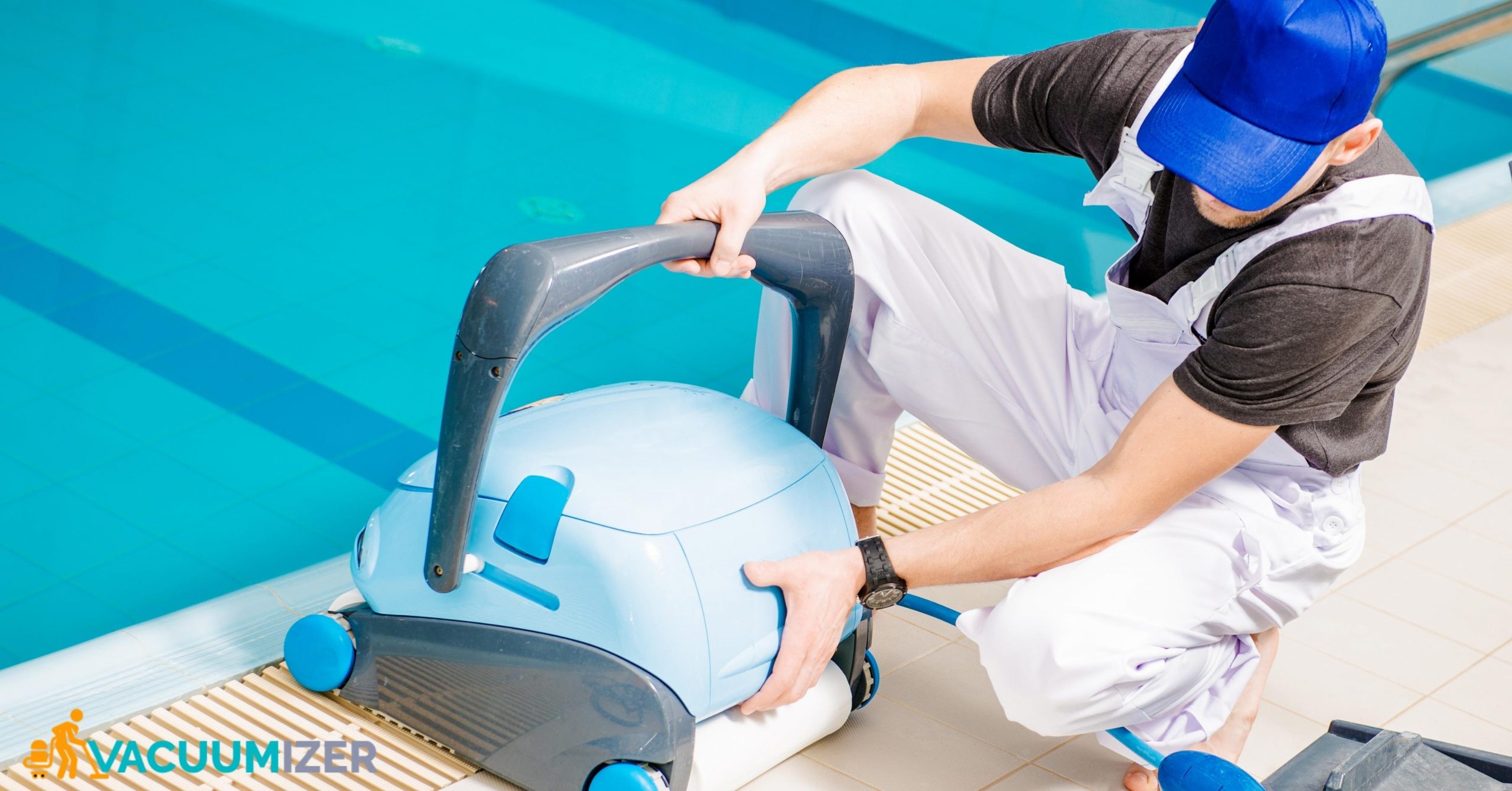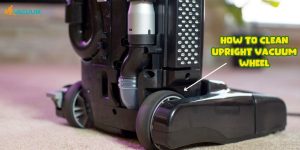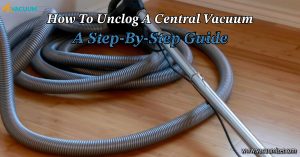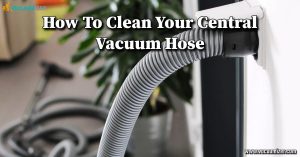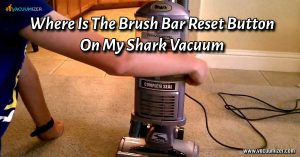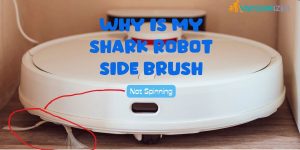A pool cleaner is an important tool for keeping the water in your swimming pool clean and clear. It works on a pretty easy concept but is very important for keeping your pool clean and free of dirt, trash, and algae. Pool owners need to know how a pool cleaner works to ensure the water stays clean and safe for swimming.
The interesting matter is you no longer have to remove leaves and dirt from your pool by hand. You may be thinking, Why? Actually, automatic pool cleaners do the work for people these days. Whether you have one or want to buy one, you may be curious about how they work.
In this article, I will guide you on how an automatic vacuum works. Let’s start!
First, we will know the main differences between manual and automatic vacuum.
Table of Contents
What is the difference between manual, automatic, and robotic vacuums?
The main difference between manual, automatic, and robotic vacuums is;
- How they work, and
- How much human help is needed to clean them.
As the name suggests, manual pool vacuums need to be controlled by hand. Users must connect them to a pool pole and hose. Then, move the vacuum head by hand across the pool’s surface while watching and controlling the cleaning. This method gives you much power but can be hard to do and take a long time.
Automatic pool vacuums, on the other hand, come in different kinds, like;
- Suction-side,
- Pressure-side and
- Robotic cleaners.
These devices are made to work independently, so you don’t have to keep an eye on them constantly. Automatic cleaners that use suction or pressure get their power from the pool’s circulation system. Robotic cleaners, on the other hand, have their own electric motors and filter systems. Automatic cleaners are known for being easy to use and effective. Because they clean the floor, walls, and sometimes even the bottom of the pool without the user having to do anything.
Since the use of manual vacuum cleaners is not that much, so today we will talk about how the three most popular automatic vacuums work.
Then, you will know how to work pool robot vacuum.
How To Pool Vacuum pool Work

There are generally 3 types of automatic pool vacuums available in the market. Let’s find out how they work.
- Robotic pool cleaner
- Pressure-side pool cleaner
- Suction-side pool cleaner
1. Robotic pool cleaner
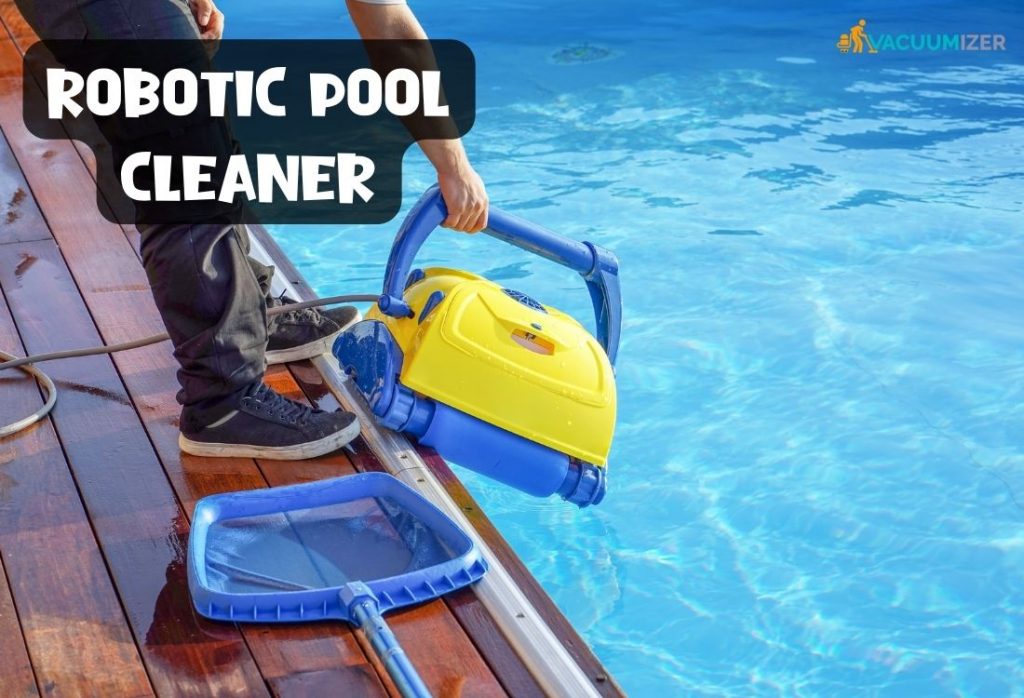
What are the Key parts of a Robotic pool cleaner?
- Main Housing
- Brushes
- Suction Inlets
- Filter Cartridges or Bags
- Floating Power Cord
- Control Unit or Remote Control
How does a Robotic pool cleaner work?
Robotic pool cleaners have a few major parts that work together to clean the pool quickly and without any help from the user. Inside the main unit is a strong electric motor that makes the cleaner move and work. Attached to the bottom of the cleaner’s body are rotating brushes that scrub and move the pool’s surfaces, loosening dirt and debris. Suction ports pull in water and the small particles. Which are then caught and cleaned in filter tubes or bags that can be taken out.
An electrical source drives the cleaner through a floating cord that ties it to the source and floats on the water’s surface. Users can control and adjust the cleaning process with a control unit or a remote control. This makes it possible to set up cleaning routines and different cleaning modes.
Robotic pool cleaners are an easy and effective way to keep your pool clean and attractive because they have these main parts that work together.
2. Pressure-side pool cleaner

What are the Main parts of a Pressure-side pool cleaner?
- Main Housing
- Pressure Inlet
- Jet Nozzles
- Sweep Hose
- Debris Bag or Canister
- Hose and Hose Sections
- Tail Hose
- Floats
- Wheels or Tires
- Control Valve
How does a Pressure-side pool cleaner work?
Pressure-side pool cleaner operates through a clever interplay of their major components.
The main housing houses the motor and key mechanisms. Connected to a dedicated pressure line or return jet, the cleaner receives a high-pressure water boost that propels it across the pool. Jet nozzles provide directional control, guiding the cleaner’s path.
Meanwhile, a sweep hose with a tail scrubber stirs up debris from the pool’s floor and walls, making collecting easier. The debris is then captured in a removable bag or canister. The cleaner’s movement is facilitated by hoses, including a tail hose for added mobility, and floats keep it buoyant.
Some types may have wheels or tires to give them a better grip, especially on pool walls. With a control valve, you can fine-tune the amount and pressure of water to get the best results.
With all of these parts working together, a Pressure-side pool cleaner can clear the pool of dirt and leave the water clean and welcoming.
3. Suction-side pool cleaner
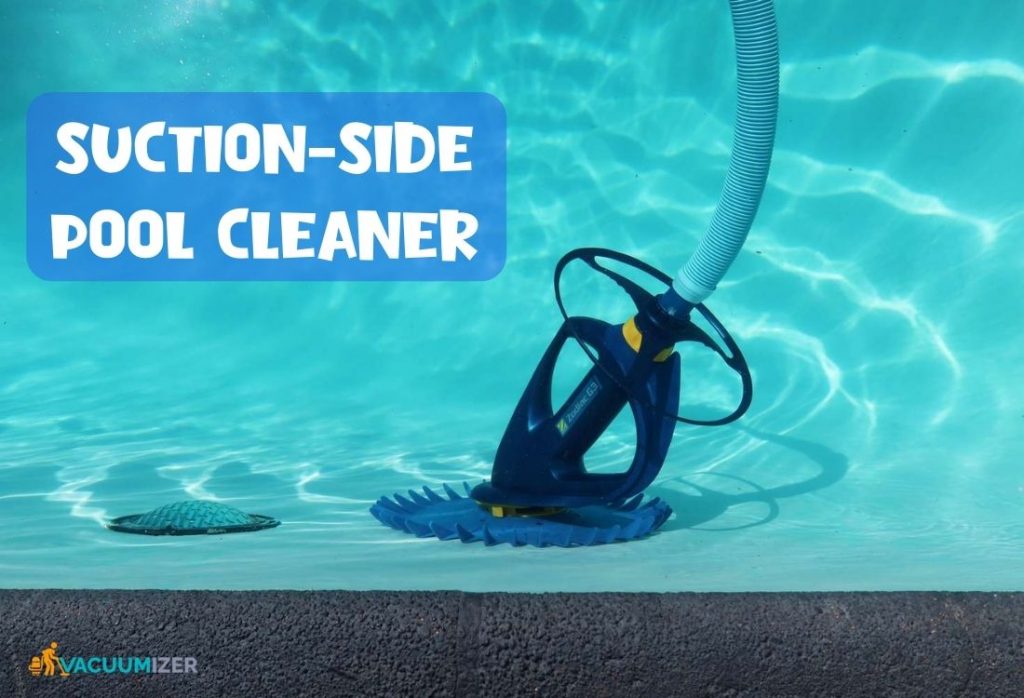
What are the Main parts of a Suction-side pool cleaner?
- Main Body
- Hose
- Suction Inlet
- Diaphragm or Flapper
- Skirt or Seal
- Deflector Wheel or Bumper
- Leaf Canister (Optional)
How a Suction-side pool cleaner work
A suction-side pool cleaner is like a helpful underwater vacuum. It’s connected to a long hose that reaches the pool’s skimmer or a special suction line. The cleaner has a part underneath that sucks in water and debris. Inside, a flexible part moves to create suction and make the cleaner move around. A skirt or seal keeps it close to the pool’s surface so it doesn’t float away.
Some have wheels or bumpers to avoid obstacles. And if there are a lot of leaves, you can add a leaf canister to catch them before they clog your pool’s filter.
All these important parts (tools) work together to make your pool clean and clear without much effort.
After that, you will know three tips for using a pool vacuum.
3 Tips for Using a Pool Vacuum

A pool vacuum is a great way to keep your pool clean and debris-free. However, there are a few things you need to keep in mind when using a pool vacuum.
First, ensure that the vacuum is properly connected to the pool filter. Otherwise, you could end up with dirty water being pumped back into the pool.
Second, be careful not to vacuum too quickly. If you move the vacuum too fast, you may not pick up all the debris.
Finally, empty the vacuum canister regularly so it doesn’t get full and cause the vacuum to lose suction. By following these tips, you can ensure that your pool stays clean and healthy all season long.
Read More: Why Should You Buy Robot Vacuum?
Watch Here: How Does A Pool Vacuum Work – Easy Cleaning
Next, you will know some common questions and answers.
FAQs on how to work pool vacuum
Can I use my pool vacuum in an above-ground pool?
Yes, many pool vacuums are suitable for both in-ground and, above-ground pools. Just ensure you have the appropriate attachments.
Is it safe to use a pool vacuum in a saltwater pool?
Yes, most pool vacuums are designed to work in saltwater pools. Just rinse the vacuum with fresh water after use to prevent corrosion.
How long should I run my pool vacuum?
The recommended run time varies, but running it for 2-4 hours per day should keep your pool clean in most cases
Conclusion
Now that you know how does a pool vacuum work, it’s time to learn about the different types of pool vacuums and their uses. We’ll also offer some pointers on how to properly operate your pool vacuum. And cleaning your pool filter. Keep reading to get started!

